Ecommerce (or “electronic commerce”) describes the sale of goods and services online.
There are six major models for conducting ecommerce today:
- Business-to-consumer (B2C)
- Business-to-business (B2B)
- Business-to-government (B2G)
- Consumer-to-consumer (C2C)
- Consumer-to-business (C2B)
- Consumer-to-government (C2G)
Use this guide to learn about each model’s unique features, opportunities, and challenges. Plus, discover the best digital marketing tactics for all types of ecommerce businesses.
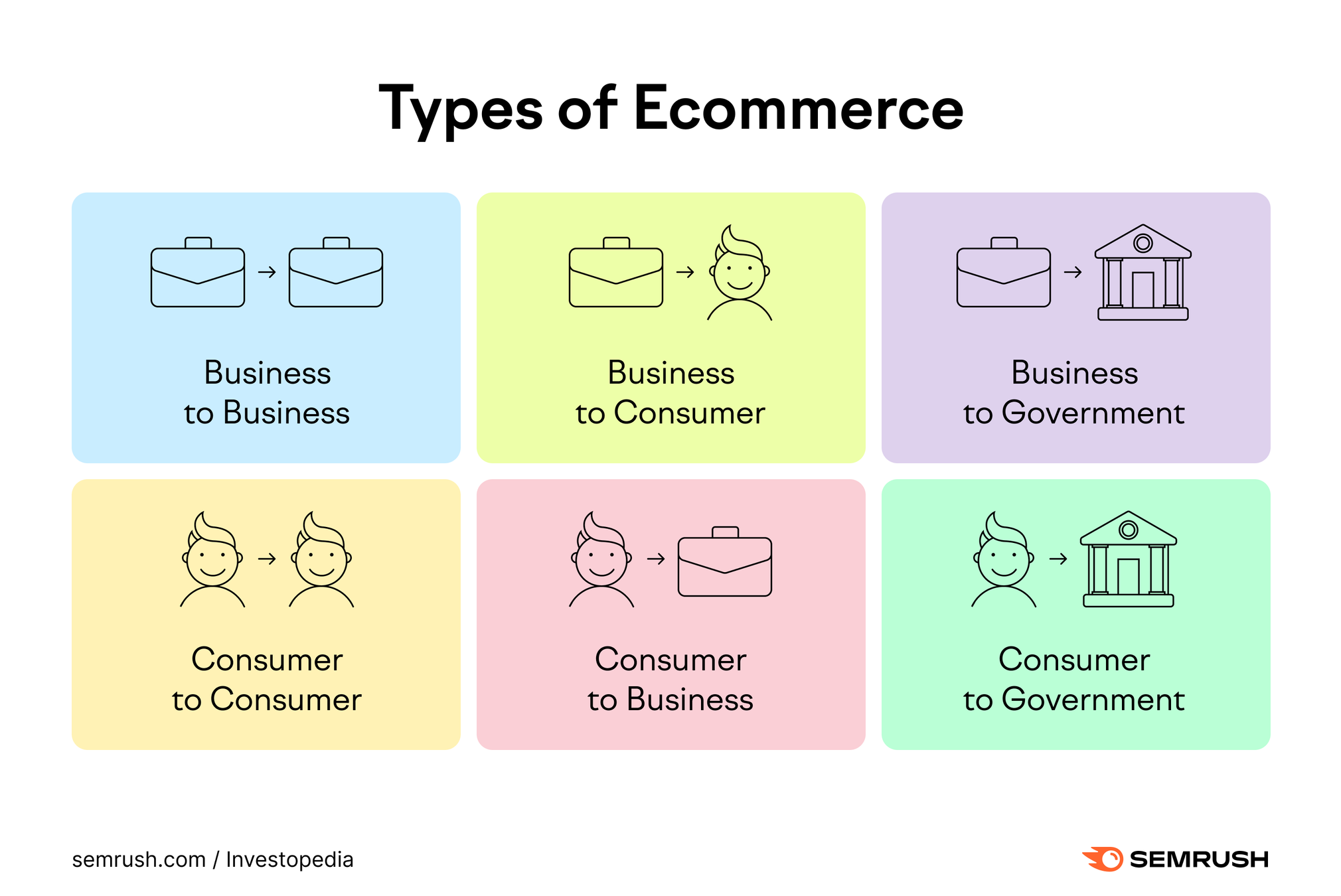
1. Business-to-Consumer (B2C)
The B2C ecommerce business model involves a business selling products directly to consumers.
B2C businesses can sell their own products—a practice known as direct-to-consumer (D2C)—or they can sell products from other brands.
Walmart, BestBuy, Amazon, and Alibaba are classic examples of B2C businesses. They resell other companies’ products via ecommerce websites.
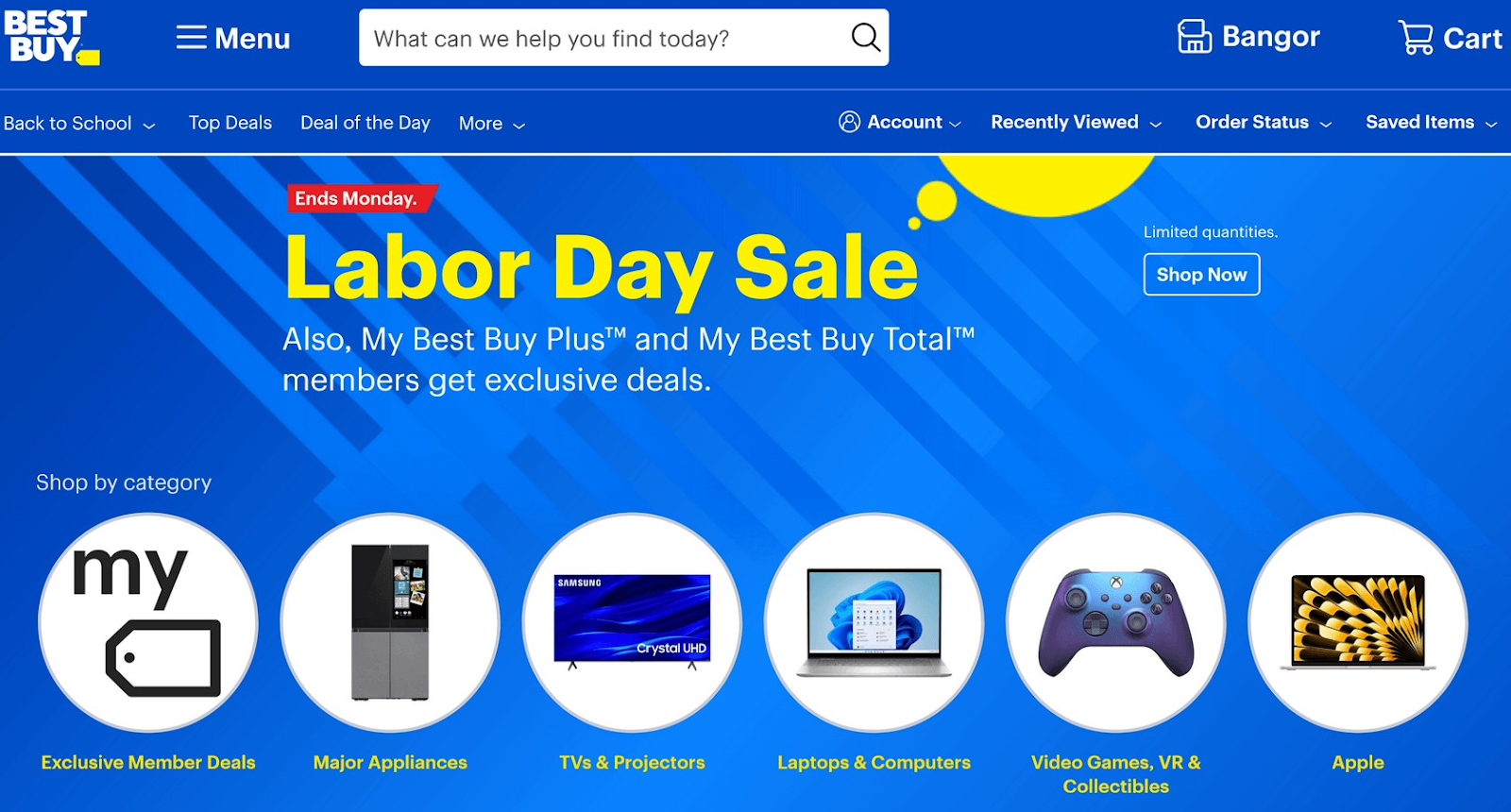
H&M, Adidas, and HelloFresh are businesses using the B2C ecommerce model that also use the D2C model. They sell their own products to consumers.
Some B2C companies sell a mix of their own and other brands’ products. For example: online clothing retailer ASOS (UK).
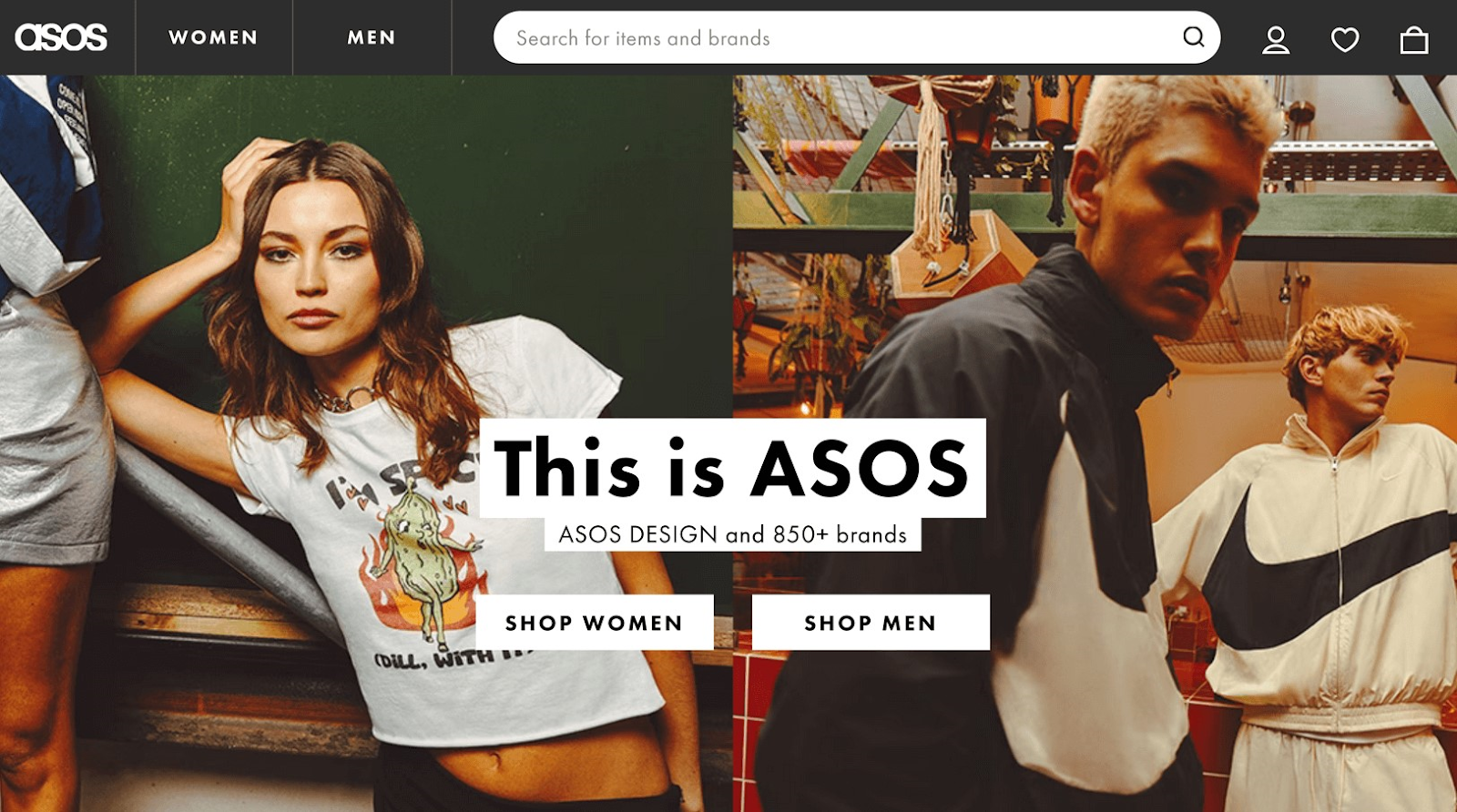
It’s typical for B2C ecommerce companies to have:
- Short sales cycles (the time it takes to attract a prospect and have them complete a purchase)
- High transaction volume
- Low average transaction value
The B2C category makes use of a variety of revenue models, such as:
- Dropshipping: Sellers showcase other brands’ products in their online stores. When someone buys, the seller purchases the item at a lower cost from a third-party supplier that ships it straight to the customer. The process is often automated.
- Subscription services: Customers pay recurring fees to access an ongoing service or regular product delivery. Spotify and pet product supplier BarkBox are popular B2C subscription services.
- Pre-owned/refurbished products: Sellers source used stock from consumers and other companies. For example: BackMarket sells refurbished cell phones in various conditions.
Low startup costs (compared with opening a physical store) give entrepreneurs easy access to the B2C ecommerce sector. That’s why competition here can be tough.
2. Business-to-Business (B2B)
B2B businesses sell products or services to other businesses.
B2B companies can sell directly to end users. Or they can sell to businesses that then resell the products to other companies or consumers.
For example: Project collaboration tool Trello is a B2B ecommerce company that sells to end-user businesses.
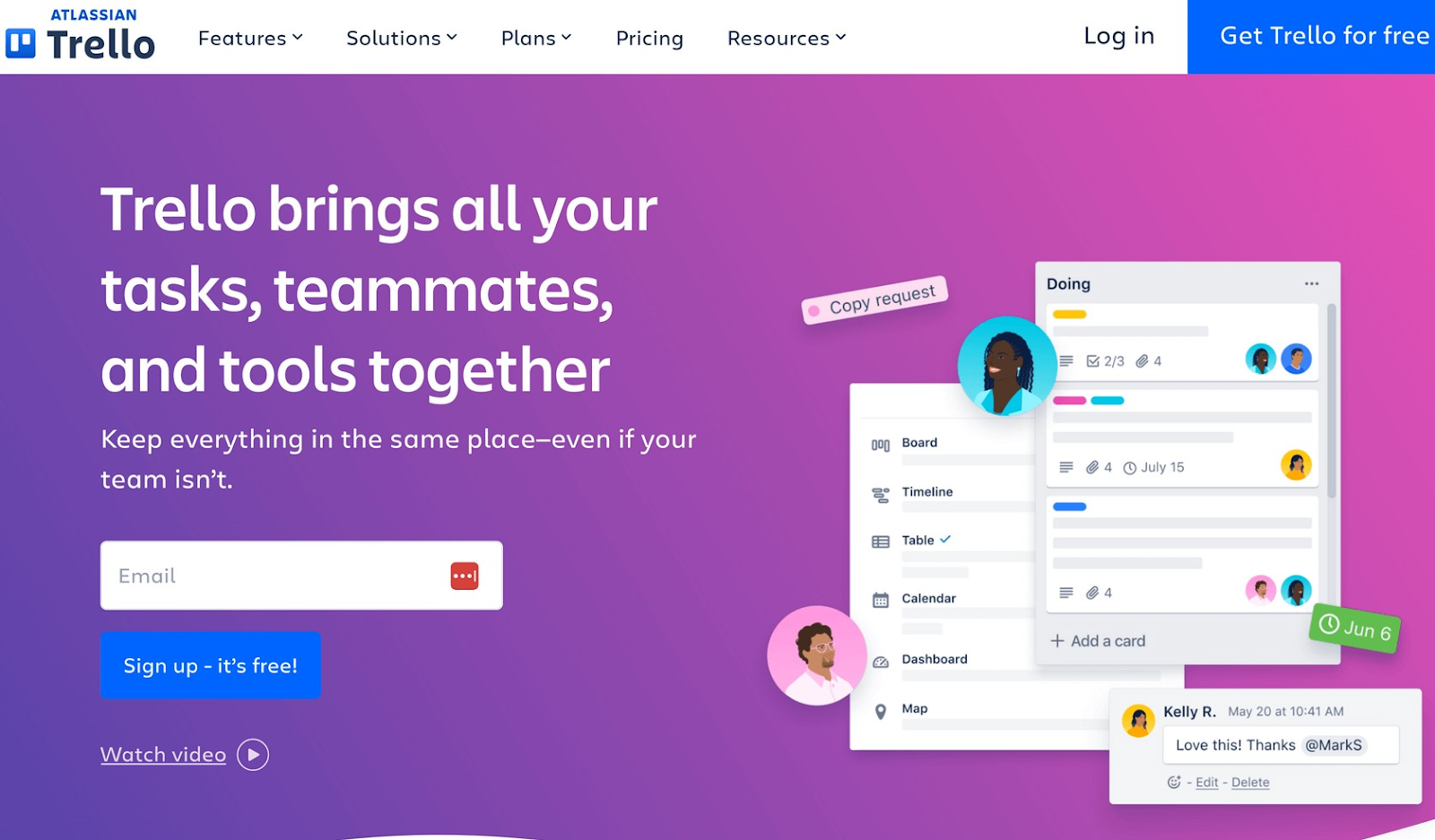
Conversely: An auto parts manufacturer that supplies an automobile factory is an example of a B2B business that sells products to another business.
Semrush is also a B2B ecommerce brand. Many of our users are business owners, marketing agencies, and freelancers (i.e., microbusinesses).
B2B ecommerce includes wholesalers such as Faire that target resellers.
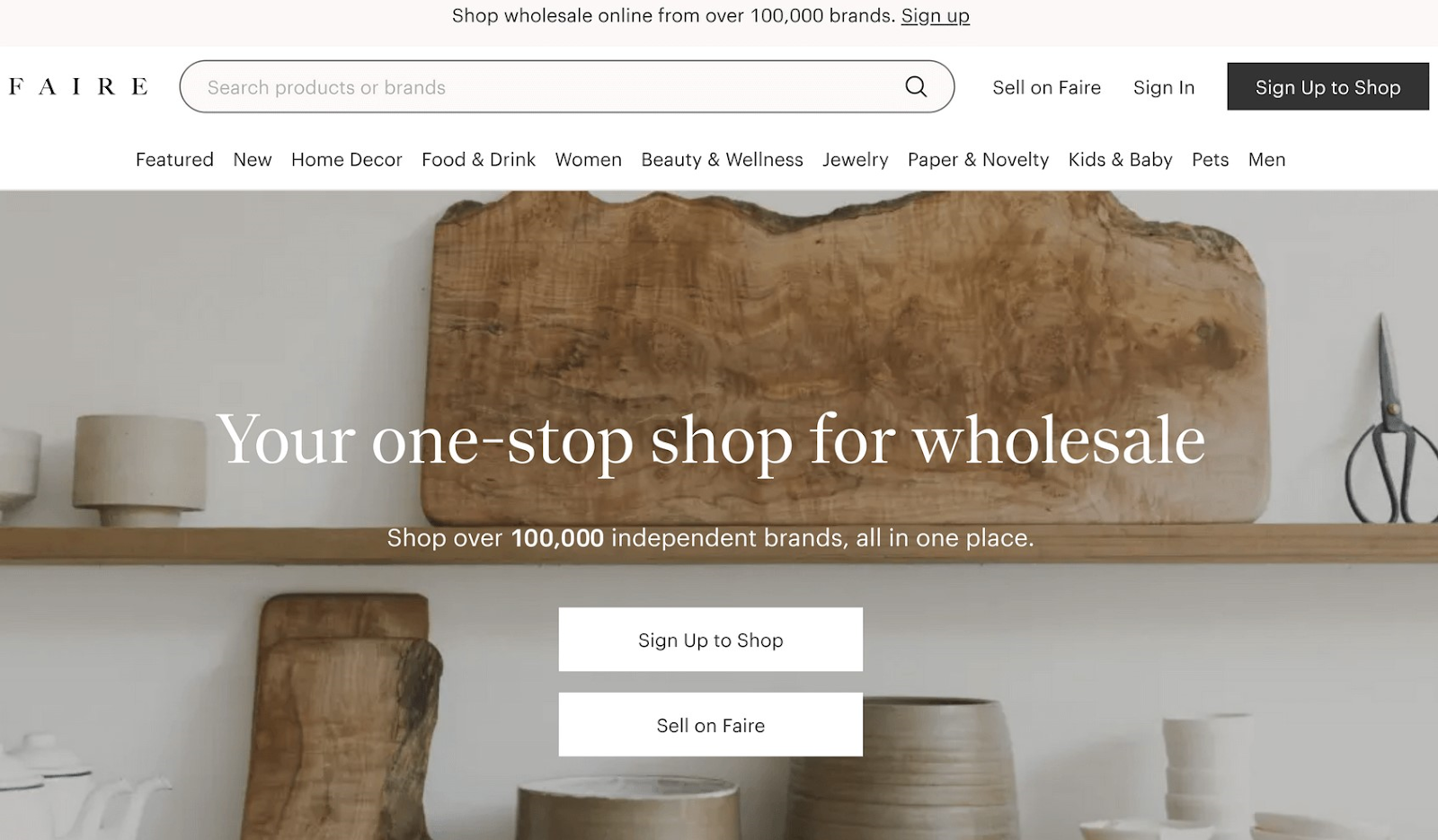
Compared with B2C purchases, B2B transactions typically involve:
- Longer sales cycles
- Higher transaction values
- More recurring purchases
Subscription models are popular among B2B ecommerce companies, especially software vendors. Sellers get regular, predictable income, and buyers can spread purchase costs to manage cash flow better.
B2B ecommerce companies often use a white labeling business model. That means the online business sells an unbranded product to a reseller. The reseller then brands and markets it to consumers or other businesses as their own.
3. Business-to-Government (B2G)
In a B2G ecommerce model, businesses market and sell products to government organizations or public administrations. These include federal, state, county, and local organizations.
For example: OpenGov sells software to local government agencies.
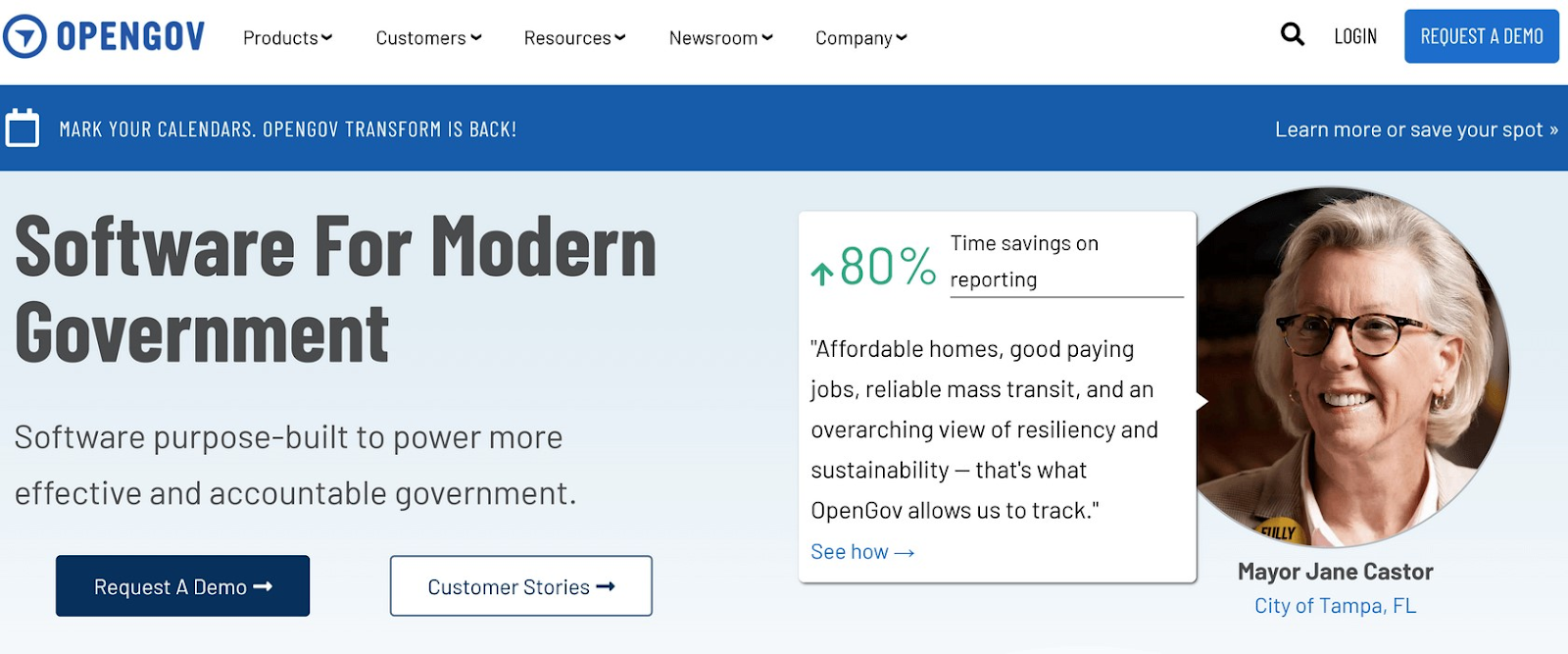
Many B2G transactions start with a request for proposal (RFP). This is where a government agency invites businesses to pitch their product or service to them in order to bid for a contract.
Most B2G companies experience:
- Long sales cycles
- High transaction values
- Strict compliance requirements
B2G ecommerce models can be good for companies with niche offerings and effective marketing. Plus, longer government contracts typically mean more financial predictability and security.
However: Government bureaucracy can make the sales process slow and highly competitive.
4. Consumer-to-Consumer (C2C)
C2C describes business transactions involving two or more consumers. The term can also refer to any provider that manages this type of online transaction.
For example: When a person sells their car to another person, that’s a C2C transaction.
They might use Autotrader to advertise their product, find potential buyers, and arrange the deal. In this case, Autotrader is the C2C ecommerce business.
Other C2C ecommerce platforms (online marketplaces) include Facebook Marketplace, eBay, Craigslist, and Vinted.
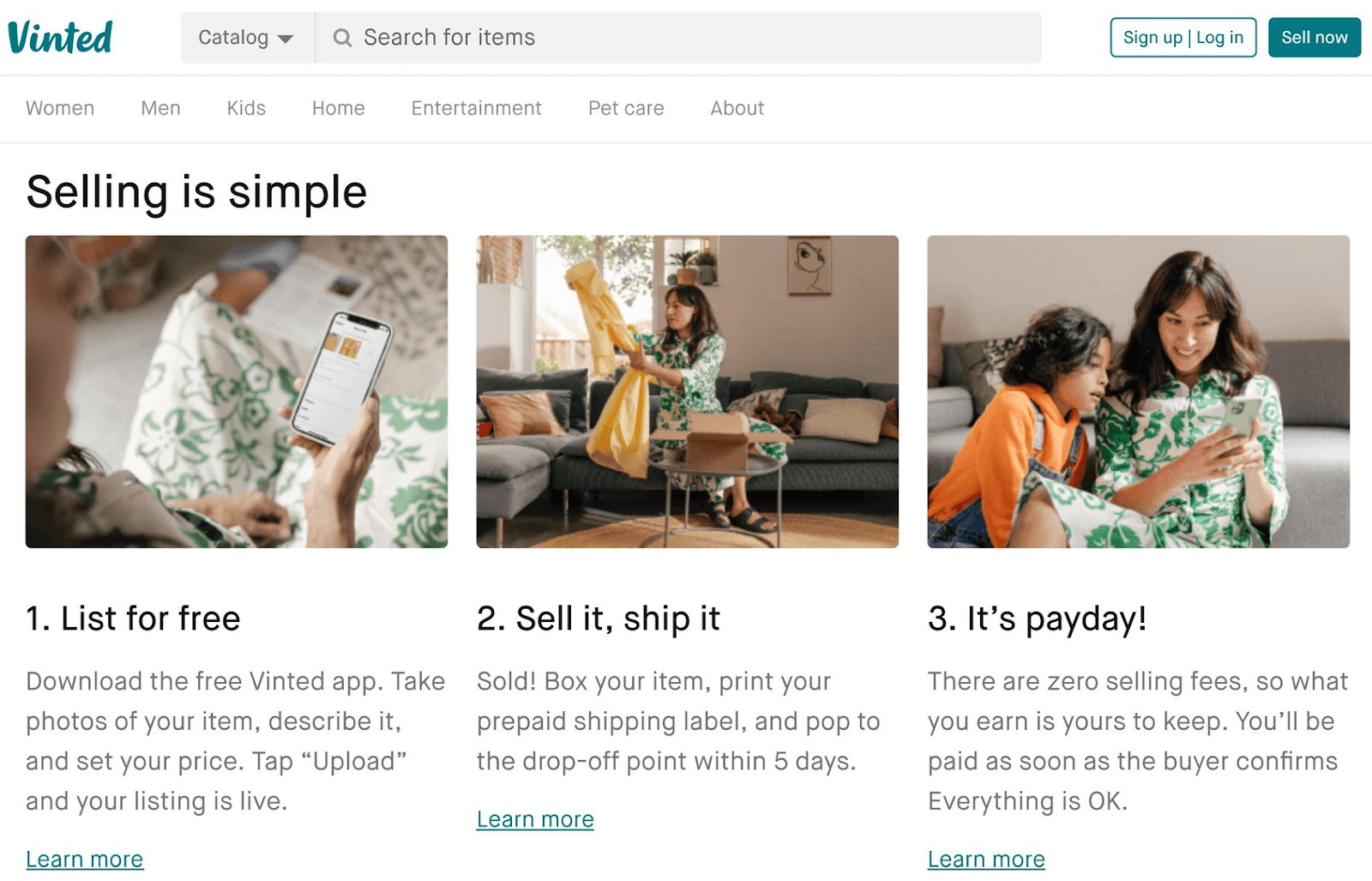
C2C apps and websites add structure to an otherwise unregulated business environment.
They provide listing services, quality control, payment processing, and dispute resolution to keep money and products flowing between consumers. Typically, they earn fees or commission in return. Or they generate ad revenue from consumer traffic to their site.
5. Consumer-to-Business (C2B)
C2B ecommerce involves consumers selling goods and services to companies.
Sometimes the company will be the end-user. For example: An individual selling an image to a newspaper is conducting a C2B transaction. Because the newspaper publishes the image, they are also the product’s end user.
Sometimes, the company purchasing the consumer’s goods will resell them. Take Shutterstock. The image library buys content from contributors (consumers) to sell to other users (often businesses).

Influencer networks also promote C2B transactions. They connect businesses with consumers who are popular on social media. Those consumers then sell the brands access to their followers. They promote the brand’s products for a fee.
6. Consumer-to-Government (C2G)
C2G describes transactions between consumers and government agencies. A C2G ecommerce business is any company that facilitates these transactions.
For example, utility companies give home and business owners direct access to government-sponsored energy services. Like Dominion Energy. The company ensures reliable power and gas delivery and allows customers to manage their services.
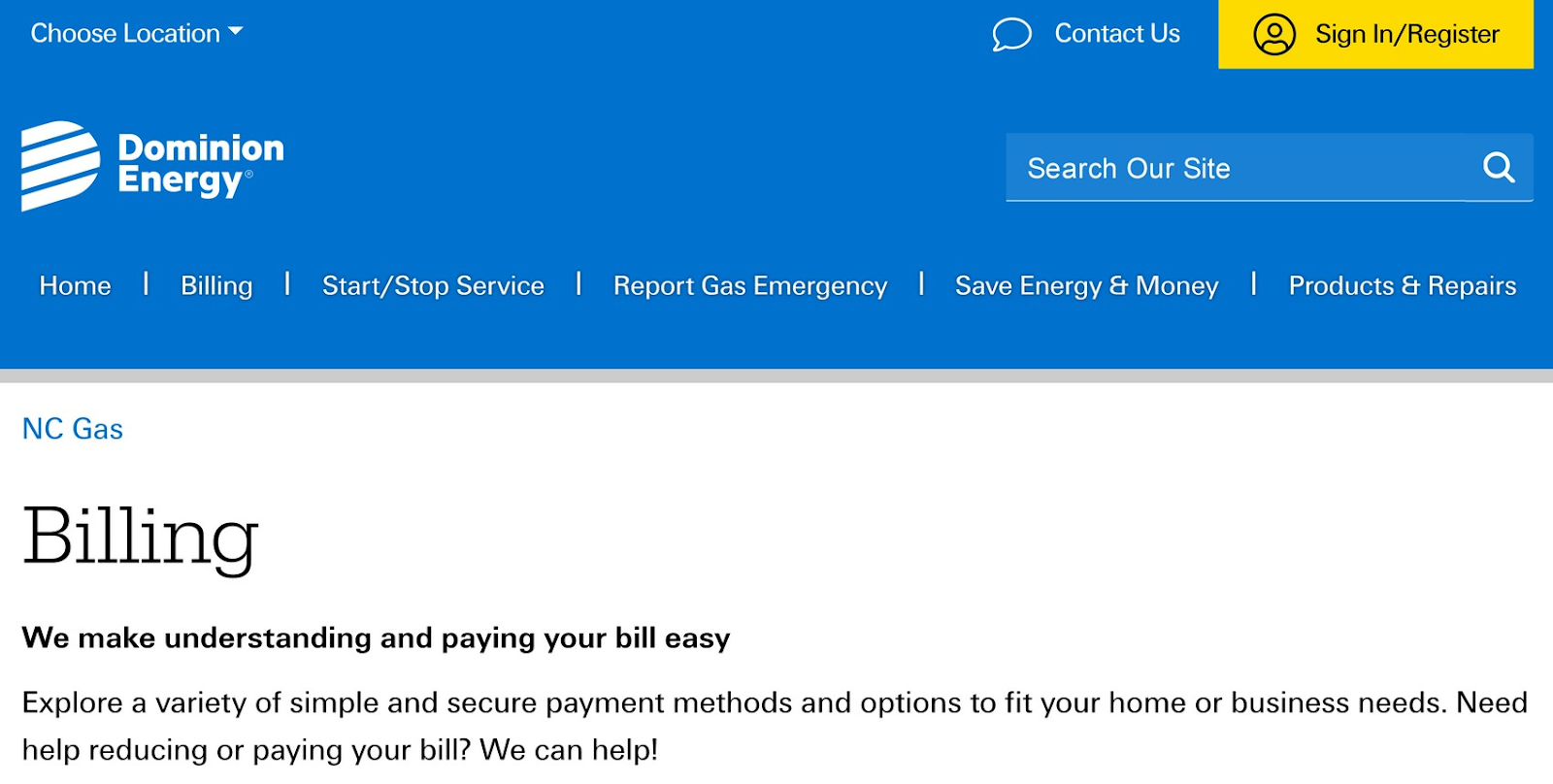
C2G ecommerce businesses empower consumers by simplifying administrative and payment processes. They offer choice over products and sometimes create healthy competition to reduce prices.
6 Proven Marketing Strategies for Ecommerce Brands
Effective ecommerce marketing reduces acquisition costs, improves customer experiences, and builds brand awareness.
And it takes many forms.
Here are six types of ecommerce marketing to grow and engage your customer base.
1. Search Engine Optimization (SEO)
SEO aids in ecommerce efforts by improving your website and online store’s visibility on search engine results pages (SERPs). It helps attract potential buyers.
The goal is to rank at the top of search results for keywords your ideal customers are using.
For example: the direct-to-consumer B2C brand Trek ranks highest for “hybrid bikes.”

That means people searching for hybrid bikes will see, and thus be more likely to click on, Trek’s page first.
Many factors contribute to your ecommerce site’s search performance. We can break down the optimization process into four tasks:
- Keyword research: Identify the product-related keywords your ideal customers use in search queries. Online searches, keyword research tools, and website analytics will help.
- Site architecture: A well-organized site structure helps Google crawl your product pages more effectively. It also helps visitors to your site more easily find the products they seek.
- On-page SEO: Optimize your site’s title tags, meta descriptions, images, internal linking, and markup to help search engines and users better understand your content.
- Technical SEO: Help Google index your content (so it can rank in the SERPs) by fixing duplicate content, slow load speeds, broken links, and more. Semrush’s Site Audit tool uncovers technical issues that could prevent your site from ranking.
Above all, remember: Google prioritizes relevant, high-quality content that fulfills users’ search needs. Algorithms matter, but always put human experience first when planning and creating product content.
You can audit and optimize your store for better conversions with the Ecommerce Booster app. The app audits the main areas of page performance: visual and text content, user experience, page speed, and accessibility on your site. Its built-in AI also helps you generate product and meta descriptions, improve image quality, write alt texts, and remove image backgrounds.
Further reading: Improve your store’s visibility and organic traffic with tips from our Definitive Guide to Ecommerce SEO.
2. Pay-Per-Click (PPC) Advertising
A pay-per-click (PPC) online advertising model uses ads to drive traffic to your site from search and social media.
It involves running an ad through a platform such as Google Ads or Facebook Ads and paying a fee every time someone clicks on it. The more competitive the search term (keyword), the higher the fee.
PPC suits ecommerce marketing because:
- Ads often show above organic content in SERPs, so users see them first
- You pay based on results (i.e., the clicks and traffic you generate), which allows more control of your spending
- It produces measurable results much faster than SEO, which makes it ideal for product launches, promotions, and startup brand awareness
- You can use data to target customers precisely for a higher chance of converting
Search engine PPC ads look like this:
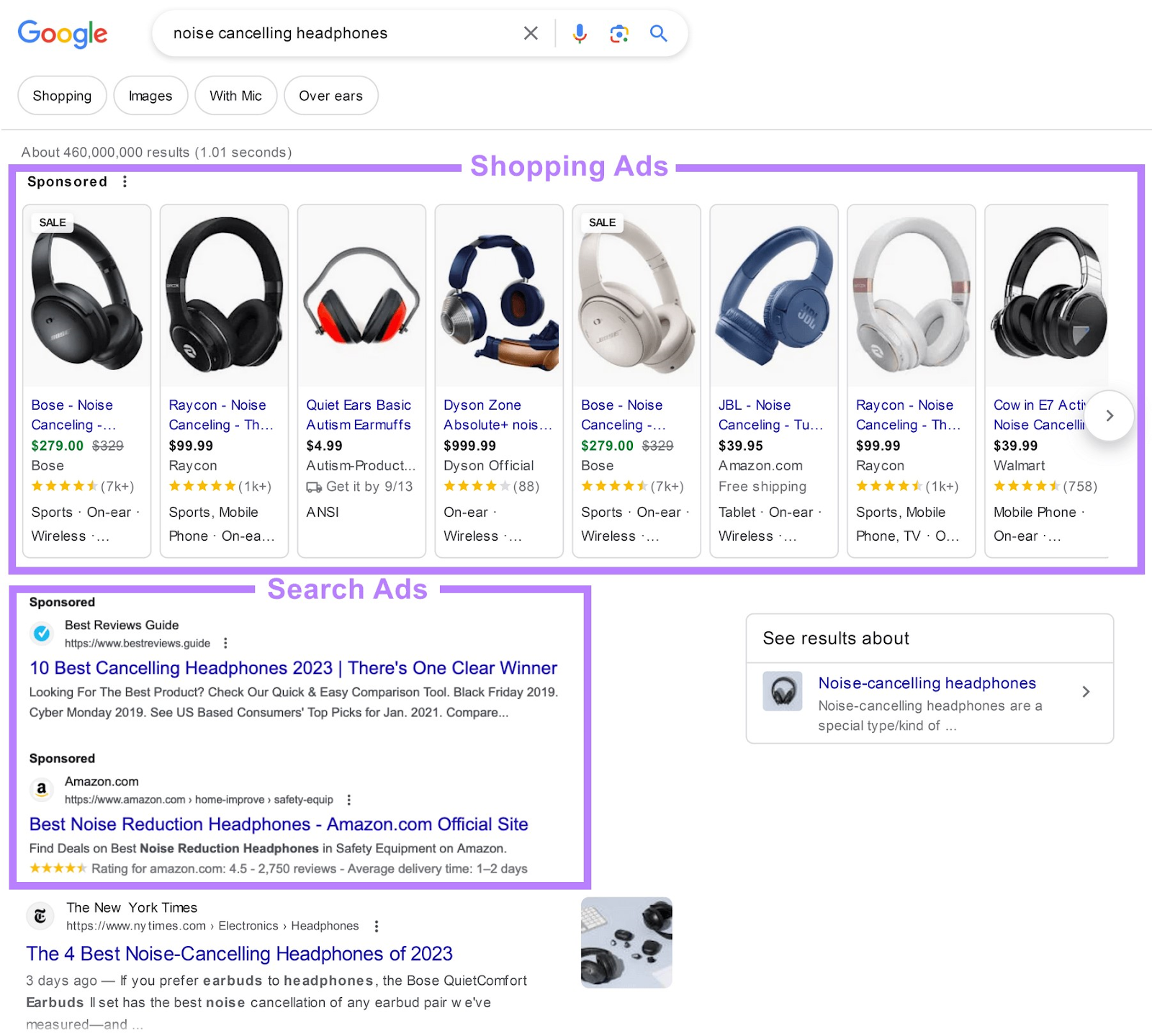
Notice how they fill most of the page, taking attention away from the organic results that follow.
And on Facebook, you’ll see sponsored posts like this nestled in with friends’ content:
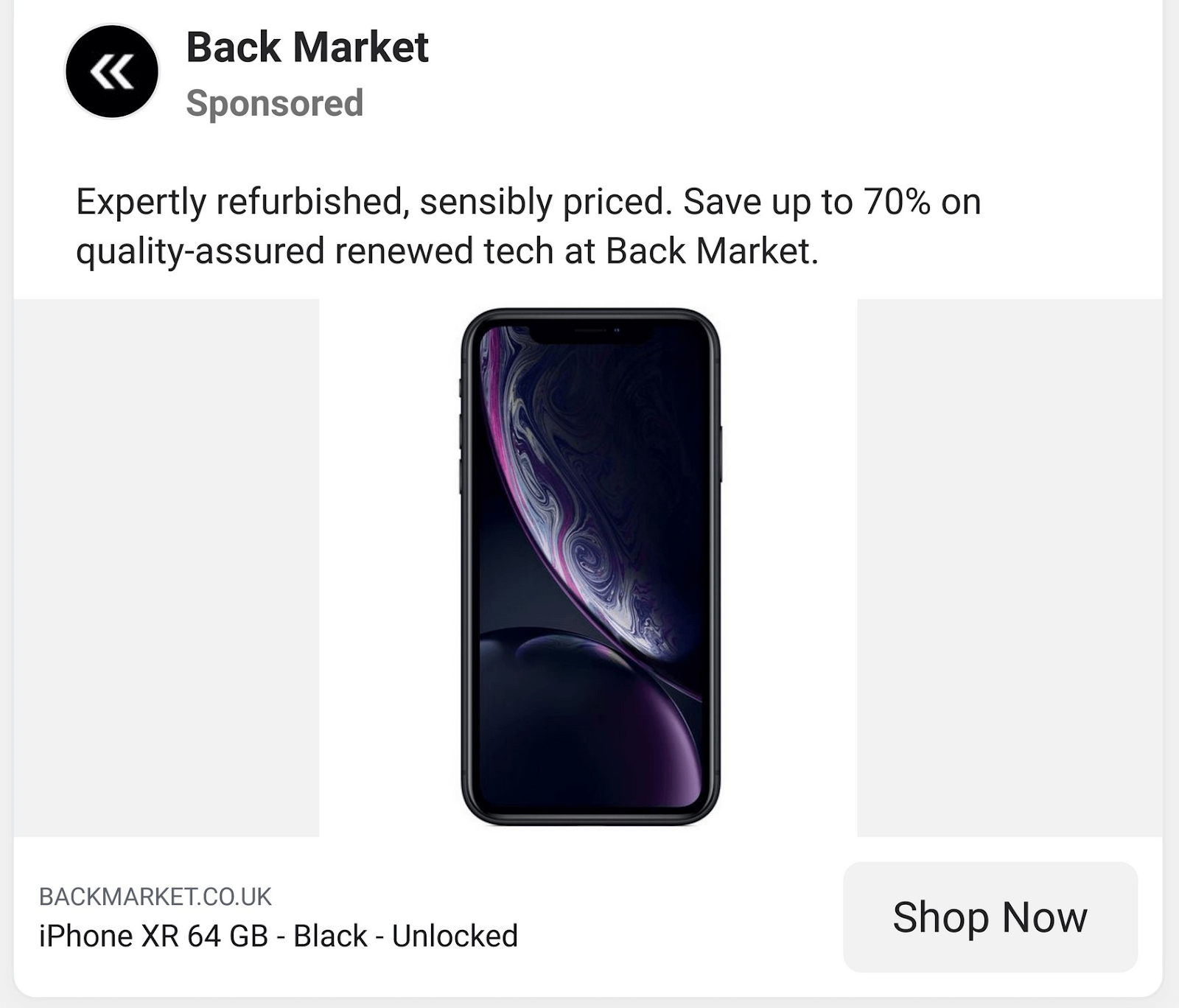
PPC can generate fast results. But planning is still important.
To drive significant returns from this strategy, you need to understand:
- Where your audience is most likely to see your ad content
- Which relevant keywords to target (you’ll need to balance competition with affordability)
Most search engines and social media sites have ad platforms for running PPC campaigns. But some suit ecommerce stores better than others.
Google Shopping ads are a great starting point because they allow you to serve product images straight onto the SERPs with clearly displayed reviews and prices.
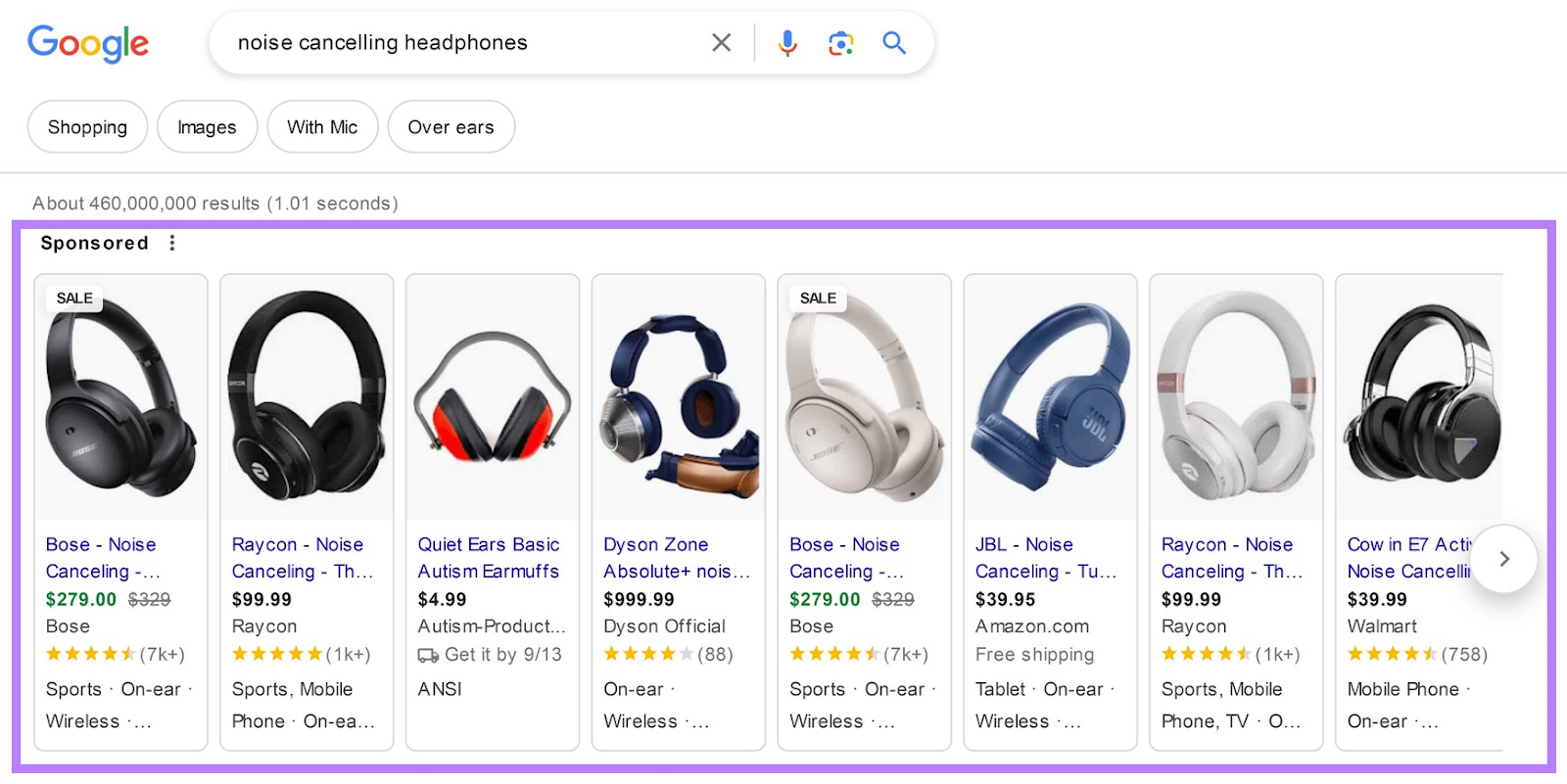
Further reading: Learn more about Shopping ads—how to set them up and how to use them to grow your ecommerce sales with our Guide to Google Shopping Ads for Any Business.
3. Content Marketing
Ecommerce content marketing is the creation and distribution of helpful, relevant content. Think things like blogs, videos, and infographics. The content helps online brands grow and maintain audience interest.
Done well, content marketing increases website traffic, drives qualified leads, and improves brand image. All of which are crucial to thriving in the ecommerce industry.
Other content marketing formats include:
- Emails
- Newsletters
- Ebooks
- Podcasts
- Social media posts
- Frequently asked questions (FAQs) pages
As an example, B2C accessories brand Bellroy lets followers peek behind the scenes with Facebook posts like this:

Engagement with the post (clicks, comments, likes, and shares) builds awareness and drives traffic to Bellroy’s product pages.
Consistently delivering relevant, trustworthy, and valuable content also helps build topical authority. This is a measure of your site’s expertise and credibility on a specific subject—something Google considers when ranking content.
Careful strategizing is your key to great ROI here.
A solid content marketing strategy is designed with specific goals in mind, has defined clear performance indicators (i.e., valuable metrics), and includes a process for iterative improvement.
In fact, 80% of marketers who are extremely successful in content marketing have a documented strategy.
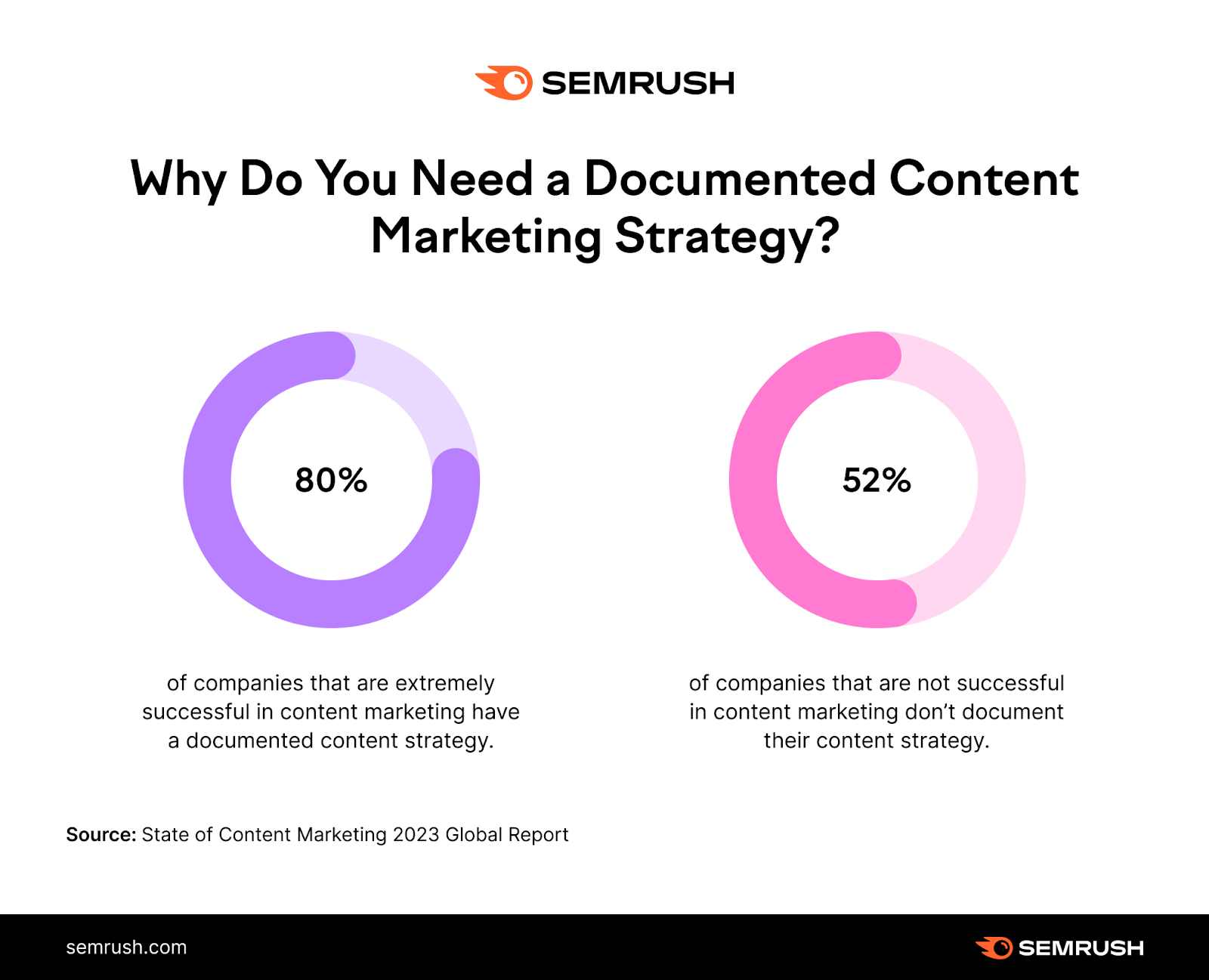
Further reading: Learn the content marketing process, from planning to publishing and beyond, in our complete guide to content marketing.
4. Influencer Marketing
Influencer marketing is when businesses collaborate with high-profile social media personalities to promote their brands or products.
Brands typically compensate influencers with free products, set payments, or fees.
Here, D2C ecommerce company Solovair collaborated with style influencer Albert Muzquiz (@edgyalbert) to promote its dealer boot on Instagram:

Muzquiz’s video got more than 17,000 likes. Compare that with the brand’s own post about the same product, which received only 86.
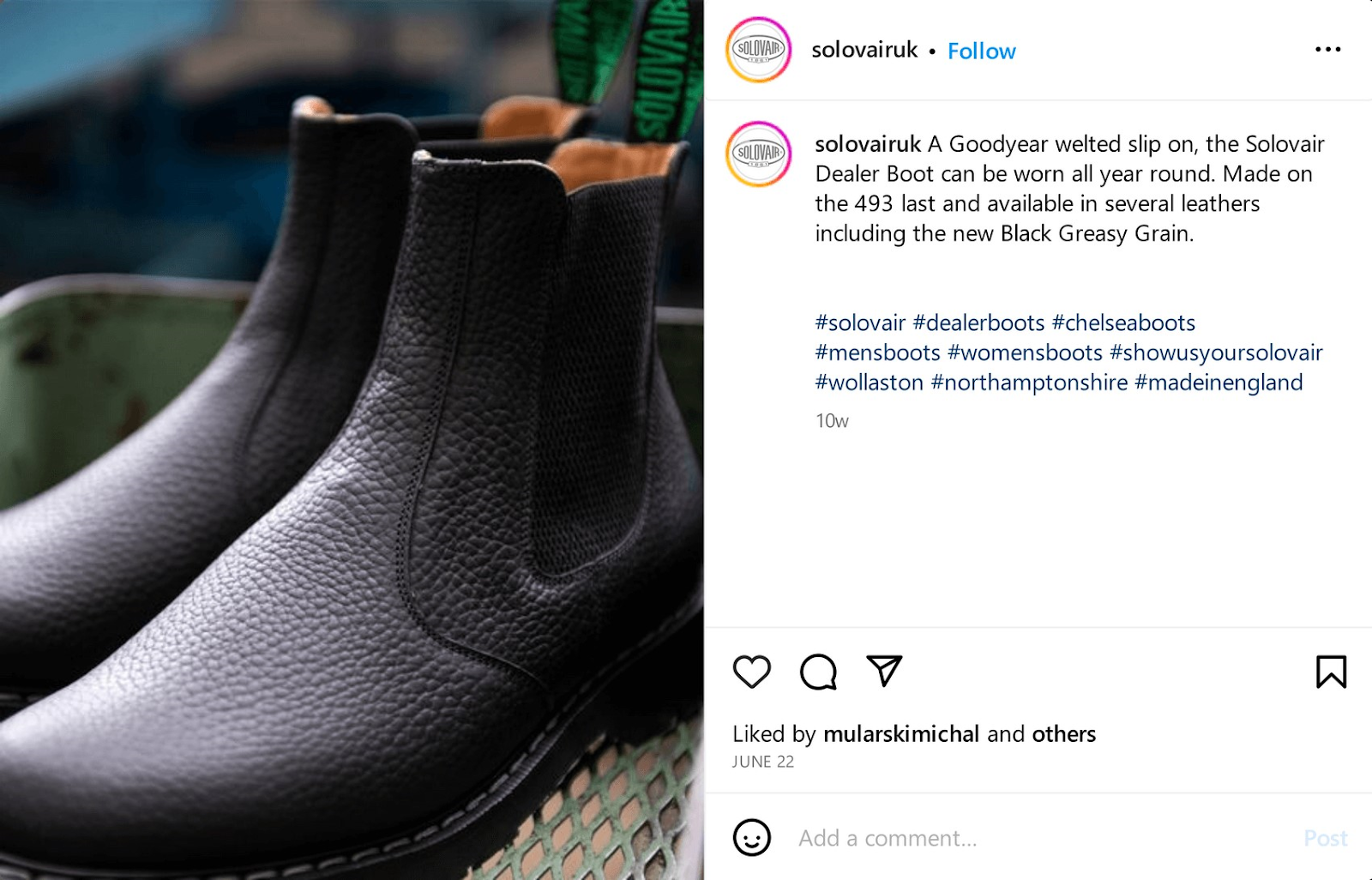
Influencer marketing isn’t just about exposure, though.
It helps ecommerce businesses—and D2C brands in particular—provide the social proof that consumers demand.
By collaborating with a high-profile figure, you’re not only borrowing their following. You're also leveraging the trust they’ve earned from their audience.
Further reading: Successful collaborations take plenty of research and planning. And a few useful tools. Learn how to effectively harness other social accounts’ followings with our Influencer Marketing Guide.
5. Social Media Marketing
Social media marketing is using social media to grow your brand’s audience, improve its reputation, and increase revenue.
It’s especially useful for B2C and B2B businesses. Platforms such as Facebook, TikTok, LinkedIn, and Instagram let brands connect directly with customers.
You can use that connection to:
- Share relevant, helpful content
- Answer customers’ questions
- Show your brand’s relatable side
These actions all contribute to trust, which encourages people to follow, buy from, and stay loyal to your business.
For example, Asana uses LinkedIn to distribute content that helps users get more from their investments:
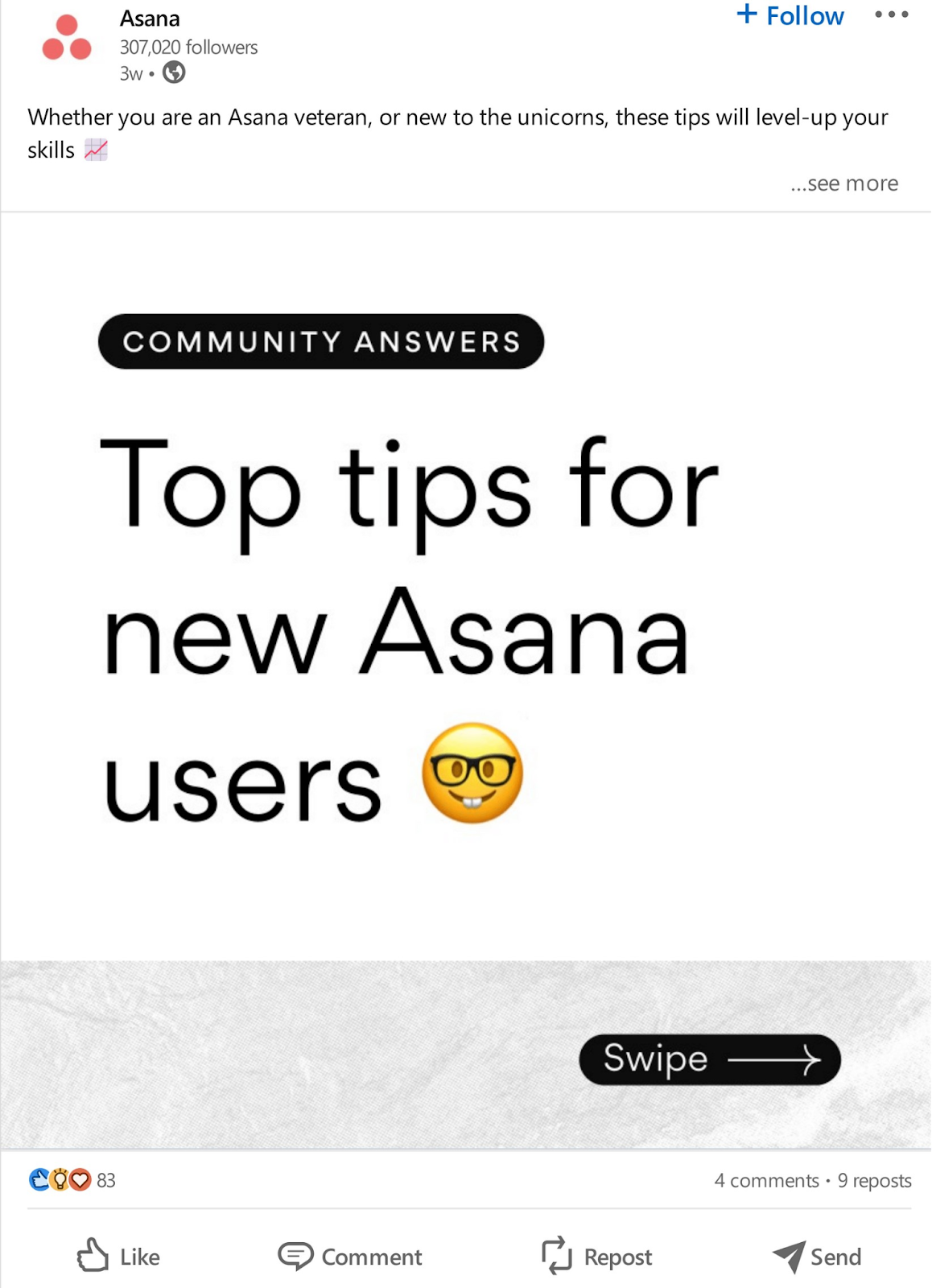
In this instance, LinkedIn gives Asana (a B2B ecommerce brand using a subscription model) the best chance of reaching its target audience of business users.
D2C businesses are more likely to find their audiences on Instagram and TikTok. Stroller brand Bugaboo is active on TikTok, for example:
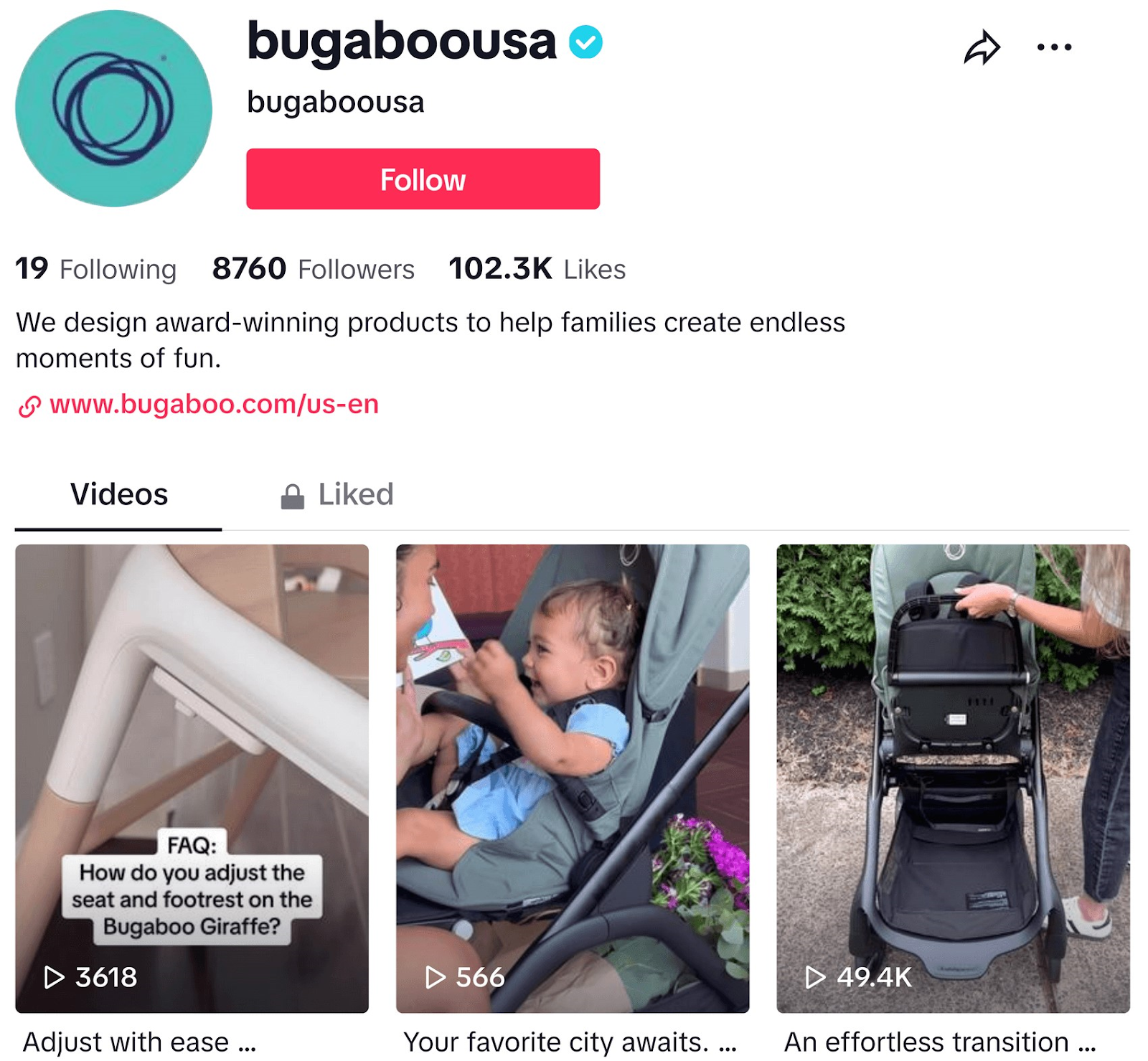
Social media marketing couldn’t be more accessible. Most platforms are free to use. That means you can start building your following immediately.
However: Consider paying for social media advertising to boost brand or product awareness faster. Most channels have ad platforms that allow you to target users based on demographics, gender, interests, behaviors, language, and more.
Further reading: Social media is about more than marketing and advertising. Learn how else it can help your business thrive in our Ultimate Guide to Social Media Management.
6. Email Marketing
Email marketing involves sending marketing content, such as guides, newsletters, catalogs, and coupons, to subscribers electronically.
Like this time-sensitive promotion from D2C tea brand August:
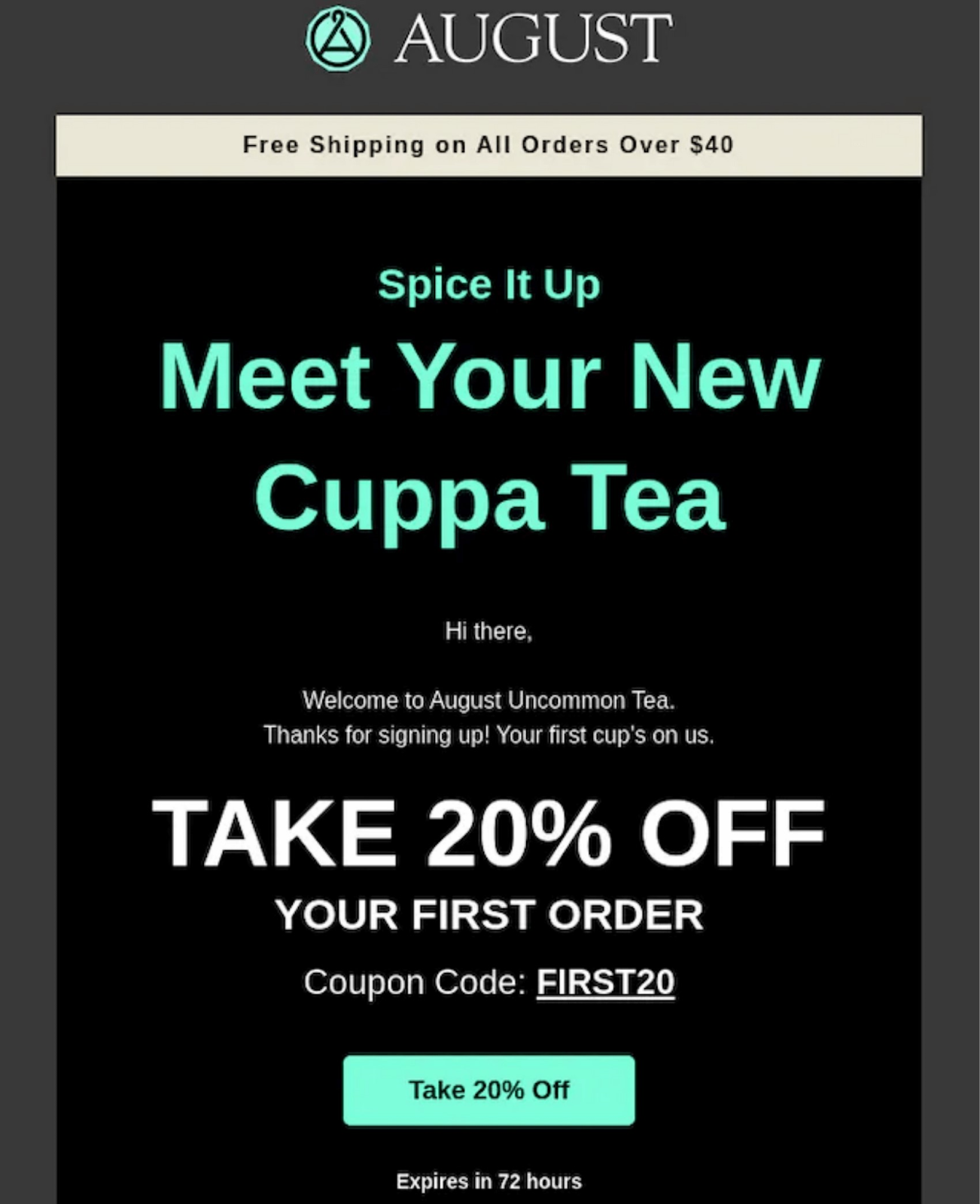
Email’s direct nature, simplicity, and accessibility make it a powerful marketing tool for all types of ecommerce businesses.
There are billions of email users worldwide, many of whom check their inboxes multiple times a day. That means you can reach potential and existing customers almost anywhere, at any time.
Email marketing software helps your business plan, manage, and measure vast campaigns. And it’s often affordable, even for small businesses.
Here’s how to start a basic email marketing campaign:
- Build an email list. Collect people’s names and email addresses (and other characterizing details if you can) by adding a form to your website. Provide incentives, such as exclusive content, to build your list faster.
- Select your email marketing software. There are plenty of online email service providers to help you organize your campaign, some of which offer free accounts. Consider starting with Mailchimp, Mailer Lite, or ActiveCampaign.
- Set your goals. Choose goals based on broader business objectives. Match them up with metrics to measure your success against. For example, if you want to promote a new range, you could track traffic to the relevant product pages.
- Create your strategy. Define your audience, segment it into data-based groups, and determine what type of content each one will find most valuable. Learn from website traffic, purchase histories, social media interactions, and sales conversations.
- Craft your content. For example, repurpose top-performing blog content into engaging, email-friendly snippets with links to your website for more detail. (Email software will help you make your content look enticing.)
- Test your email system. Do a trial run to check that everything works. Enlist five or more colleagues to subscribe and open the messages on different devices and browsers. Have them ensure the emails are error free and display correctly.
- Automate your email campaign. Schedule the emails to be sent at appropriate intervals over the coming weeks. For example, for new customer sign-ups, send a welcome email in the first week, a coupon in the second, and personalized recommendations after that.
Once the campaign’s running, monitor its performance in your chosen software.
Metrics such as open rate, click-through rate, email sharing/forwarding rate, and conversion rate will tell you how well it’s going. Use what you learn to improve with each campaign. For example, try snappier, attention-grabbing subject lines if your open rate is low.
Further reading: It takes great content to stand out in busy shoppers’ inboxes and convince them to click through. Captivate your audience with help from our article, How to Win People Over with Compelling Email Content.
Organize Your Ecommerce Marketing Efforts with Semrush
Whichever type of ecommerce business you run, the best way to gain visibility and trust is with a data-informed marketing strategy.
Start working toward your short- and long-term ecommerce goals today. Organize your SEO, content marketing, PPC efforts, and more by starting a free trial with Semrush.
